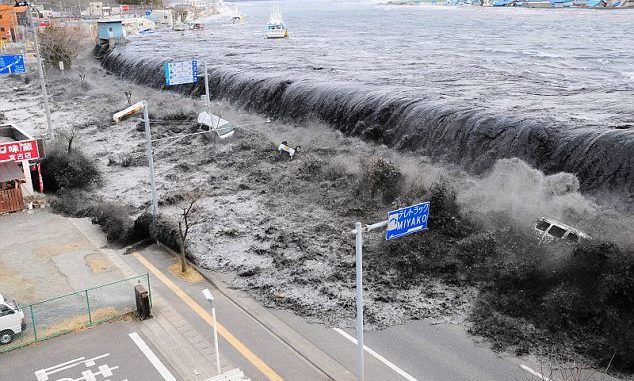
Japan may face another mega earthquake similar in magnitude to the 9.0 earthquake that killed almost 16,000 people in 2011.
Researchers have detected shallow tremors beneath the ocean that may point towards an impending earthquake.
Unfortunately, the technology used to detect the tremors cannot tell us the time that mega earthquake is likely to take place.

BYPASS THE CENSORS
Sign up to get unfiltered news delivered straight to your inbox.
You can unsubscribe any time. By subscribing you agree to our Terms of Use
Iflscience.com reports:
Japan already has the most powerful seismic network in the world – and research institutions in the country are constantly growing it. Ocean Bottom Seismometers, which measure motion under the sea, have greatly facilitated these efforts by listening to the “rumbling” that is created when two tectonic plates meet. Such instruments have helped detect low-energy, “slow earthquakes” along oceanic trenches that we otherwise wouldn’t notice.
These earthquakes, which we know are produced deep under the famous San Andreas fault, preceded the Tohoku Earthquake. They occur much more slowly than standard earthquakes. If they are associated with the underground movement of magma and hot water but they are not related to volcanoes, they are knows as “non-volcanic tremors”. By comparison, big earthquakes are caused by the rupture of faults and give rise to short-lived, high-energy seismic waves.
Slow-slip earthquakes and tremors don’t cause any damage on their own. However, if they coincide with very-low-frequency earthquakes they can. These are another type of slow earthquake that is caused by processes deeper down under ground than tremors and usually indicate fault motions near the dangerous area where the tectonic plates meet. If all these types of slow earthquakes take place, along the faulted zone at different depths, they could be a sign we are near to a mega-thrust earthquake.
The researchers – who investigated the Kyushu Palau Ridge, southeast of Kyushu – have, for the first time, been able to detect and map shallow tremors in correlation with the other kinds of slow earthquakes. Even more importantly, they have showed what direction all these events are moving in. This kind of detailed knowledge of seismic activity is considered one of the most reliable ways of predicting big earthquakes.
Warning Signs
What the study found out is that the waves produced by all these quiet earthquakes consistently migrated north along the ridge. The movement abruptly ended at the limit of the trench, where it was blocked by a so-called locked zone – where friction keeps the two plates together so they can’t slip – where previous mega-thrust events have occurred. After this, the waves travelled east.
This does not look promising, as to avoid a mega-thrust earthquake you’d prefer the slow quakes to stay in a locked zone, where the stress caused by them can be released and the movement can fizzle out. In this case, however, they are probably causing the coupling between the two plates to weaken, which is expected before a mega-thrust event.
The study, which was published in Science on May 7, shows that shallow slow earthquakes may therefore become a reliable way of detecting when and where the next mega earthquake will strike. This can be done by deploying ocean bottom seismometers along different trenches. In that way, we could detect the pattern of earthquakes in various places so that they would become an exact marker of when any mega-thrust earthquake strikes under the ocean, often causing a tsunami as well.
The next such earthquake could strike the coast of Kyushu, a region well known for its dangerous volcanoes. Let’s hope that, by then, we have come far enough to prevent the same devastation as we saw in 2011. No place is better than Japan to drive such technological progress.

